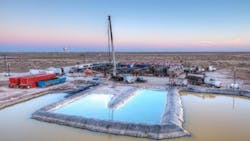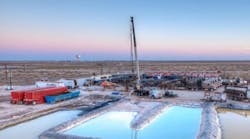‘We’re picking pennies up now’ – Permian producers face peak questions
Travis Stice wasn’t definitive but he was definitely persuasive: “It is likely that US onshore oil production has peaked and will begin to decline this quarter,” the former chairman and chief executive officer—now executive chairman—of Diamondback Energy Inc. wrote in a letter to investors early this month.
Stice pointed to the confluence of three key factors: 1) Demand has slipped as the economic picture has grown cloudy; 2) Supply is set to grow globally thanks mainly to OPEC+; and 3) Permian basin’s geology has begun to work against producers. That has led Diamondback and some peers—large and small—to rein in capital spending plans this year, moves that will limit production growth in 2026 and beyond (See sidebar). There is chatter that Permian production now being pushed out many never come back en masse.
“We had expected the Permian to continue growth through 2027 and we had expected that US production overall would peak between 2027 and 2030,” Vicki Hollub, Occidental Corp.’s president and chief executive officer, said on her team’s quarterly earnings call May 8. “With the current headwinds—or at least volatility and uncertainty around pricing in the economy and recessions and all of that—it’s looking like that peak could come sooner.”
On Diamondback’s quarterly call 2 days prior to Occidental’s, Stice expounded on the letter he had published the afternoon before. The Permian, he said, produces about 6 million b/d of oil but needs to offset a natural decline of about 2.5 million b/d each year.
“It doesn’t take much capital to come out of the equation for that base decline to really be seen in production,” Stice told analysts. “This decline that we’re on is really going to be magnified” as more capex gets delayed or altogether shelved, he said.
One factor driving the magnifying effect is that production has become more expensive as the Permian has matured over the past decade and more. Since early 2022, respondents to the Dallas Fed Energy Survey say the West Texas Intermediate price their company needs to profitably drill new wells has risen to $65 from $56.
And while barely an earnings call or conference presentation passes without public-company executives spotlighting efficiency gains teams continue to make, progress is far more linear today than exponential.
While Robert Clarke, vice-president of upstream research at Wood Mackenzie, says there is potential for AI tools to improve reservoir modeling and well design, and in the process lower break-even prices by up to $5/bbl, Stice sees gains today and going forward as being fractionally as impactful as in the past.
“We’re picking pennies up now,” Stice said on Diamondback’s call early this month. “Earlier in our history—probably most recently 2014 and early 2015—we were able to pick up dimes and quarters.”
Beyond the tipping point, a longer-term perspective
It’s worth noting that Lower US production doesn’t have to mean lower profitability for producers—at least over the medium term. Falling shale output will put a higher floor under commodity prices, independent analyst Paul Sankey said recently, and make longer-term investing in the energy sector an attractive proposition.
Let's get this over with and move forward. Because the other side of this is going to be great for those that are left.
- Diamondback Energy's Kaes Van't Hof
“Once we put the US oil-and-gas production side into decline, it will probably keep declining,” Sankey said in a May 20 video. “And once that decline starts, it won’t be long before the oil market gets really tight.”
That will mean good things for lower-cost producers who can ride out the tipping point in production and pick up a few more pennies in efficiency along the way. Stice’s successor, for one, sees a drop in shale output as ultimately benefiting Diamondback’s shareholders. Kaes Van’t Hof, who took over from Stice at the company’s annual shareholders’ meeting May 21, said earlier this month that his team’s attitude is, “let's get this over with and move forward. Because the other side of this is going to be great for those that are left.”
Also worth noting: Nearly a decade ago, much of the industry was talking about Permian production having already peaked as the interaction of parent and child wells and issues around water management, among other things, stretched operators who also wrestled with a steep fall in the price of WTI.
The sector has surprised many observers since then and one prominent executive this week told the Qatar Economic Forum that it just might again.
“We see plateauing production—probably the end of this decade—coming out of the US unless there’s going to be another technological breakthrough in our business,” ConocoPhillips chief executive officer Ryan Lance said. “And don’t bet against our industry.”
About the Author
Geert De Lombaerde
Senior Editor
A native of Belgium, Geert De Lombaerde has more than two decades of business journalism experience and writes about markets and economic trends for Endeavor Business Media publications Healthcare Innovation, IndustryWeek, FleetOwner, Oil & Gas Journal and T&D World. With a degree in journalism from the University of Missouri, he began his reporting career at the Business Courier in Cincinnati and later was managing editor and editor of the Nashville Business Journal. Most recently, he oversaw the online and print products of the Nashville Post and reported primarily on Middle Tennessee’s finance sector as well as many of its publicly traded companies.







